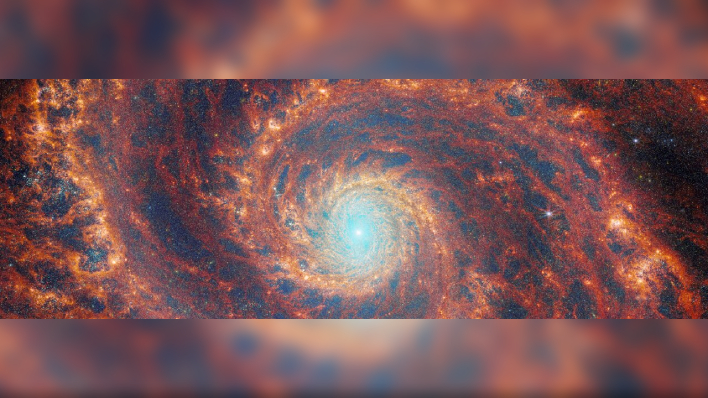JWST Captures Spiraling Arms Reaching Out Of A Galactic Whirlpool And It's Mesmerizing

The James Webb Space Telescope (JWST) captured an alluring image of the winding arms of spiral galaxy M51 that the European Space Agency (ESA) describes as a "'FEAST' for the eyes." The image is a composite that merges data received from JWST's Near-InfraRed Camera (NIRCam) and Mid-InfraRed Instrument (MIRI).
Each month ESA chooses one image to be its Image of the Month, and this month it chose a spectacular picture of spiral galaxy M51, also known as NGC 5194. M51 lies about 27 million light-years from Earth in the constellation Canes Venatici. The tantalizing galaxy is in a fierce relationship with its neighbor, dwarf galaxy NGC 5195, which has made the duo one of the most studied galaxy pairs. JWST's recent observation of M51 is part of a series of observations that are collectively titled Feedback in Emerging extrAgalactic Star clusTers, or simply FEAST.
FEAST observations are meant to discover and study stellar nurseries in galaxies beyond our own Milky Way. Stellar feedback is used to describe the "outpouring of energy from stars into the environments which they form," and provide critical data concerning the process in which the rates stars form, according to ESA.

MIRI is the observatory's only instrument that is capable of operating at mid-infrared wavelengths. Its versatility is demonstrated by its ability to offer a comprehensive set of modes: imaging, coronagraphy, and different varieties of spectroscopy. In order for MIRI to observe the distant objects in mid-infrared, it must be kept 30 degrees cooler than the other instruments. This is accomplished by the utilization of a cooler system known as a cryocooler.
Webb is bringing new light to our understanding of the early stages of star formation and stellar light. JWST has allowed scientists to observe star clusters emerging in galaxies beyond our own Milky Way for the first time ever. Webb's capabilities, shown in the recent images of M51, are opening up new possibilities for astronomers and scientists and helping them better understand how the star formation cycle and metal enrichment are regulated within galaxies.

